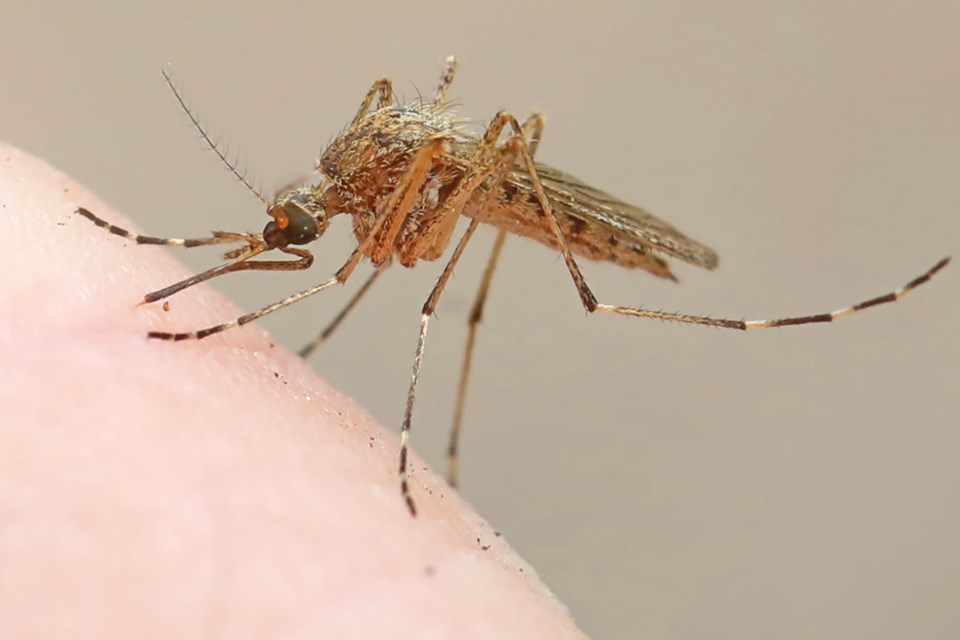In this case zero is the desired number.
Zero as in human West Nile virus (WNv) cases and zero as in positive mosquito pools in the Simcoe/Muskoka area, including Barrie.
That was the case last year and Simcoe Muskoka District Health Unit (SMDHU) officials are hoping for a repeat in 2023.
But Brenda Armstrong, manager of the SMDHU’s healthy environments program, said Thursday it’s still too early to know.
“West Nile virus has to ramp up in the environment before we tend to see spillover into the human population,” she said. “It’s not that the risk is zero early in the season, but it is lower. This is the time of year where mosquitoes are laying their eggs in catch basins and other areas. They’re moving through their life cycle, the population is getting bigger, they’re feeding on birds that are the reservoir for West Nile virus.
“And when this year’s mosquitoes are infected and actively biting, that’s when we can see the potential for human exposure to occur,” Armstrong said. “So we typically don’t anticipate seeing human cases until later in the summer, late July moving into August and September is when we really need to be aware.”
In 2020 SMDHU reported five mosquito pools that were WNv positive, after previous years when there had been two or three pools a year. Then none in 2021 or 2022.
Spread to people by mosquito bites after the bugs bite an infected bird, WNv can cause humans to become ill, and in rare cases cause meningitis, inflammation of the brain and loss of muscle function — although many people infected with WNv have mild or no symptoms.
“It’s those severe symptoms that we want to prevent,” Armstrong said, “and so our work is really to prevent the circumstances that could lead to a big outbreak of West Nile virus, because then we have that risk — it’s less than one per cent of the population ends up with those neurological symptoms — but if you have 100 cases and you are starting to see more of that happening, the risk is severe.
“The long-term health effects for those people who have those severe symptoms are devastating, and completely debilitating,” she said. “That is why we work to prevent, so all of our efforts are meant to protect against an outbreak.”
Armstrong said the last significant outbreak of WNv across areas of Ontario was in 2002.
Which is why the health unit is involved in larviciding programs, to reduce the size of the mosquito population.
In 2022, Barrie had three rounds of larviciding treatment, from July 21 to Sept. 14, treating 13,525 storm sewer catch basins.
Last year, SMDHU said there were no human WNv cases reported in the Simcoe or Muskoka area, that more than 4,700 mosquitoes were collected for identification and testing, and there were no positive pools.
The WNv surveillance program includes monitoring municipal catch basins, stormwater ponds and natural sites for mosquitos and conducting adult trapping. The Barrie program is already underway and is performed by SMDHU staff on a weekly basis.
The Culex pipiens/restuans species of mosquitoes typically develop in catch basins, and are a major contributor to the spread of the viral infection.
The larvicide, when applied to the catch basin sumps, will disrupt the mosquito’s life cycle and adult mosquitos will not emerge. By reducing the adult Culex population, the spread of WNv is reduced, as is the risk of WNv exposure to humans.
Municipally owned catch basins located on private property aren’t scheduled for larvicide application and are managed on a request-only basis by the landowner, to the city’s waste management and environmental sustainability branch. A consent form must be signed by the landowner prior to treatment.
Ontario regulations empower SMDHU to determine if there’s a need to reduce the risk of WNv exposure and if so, to compel municipalities to take action.



